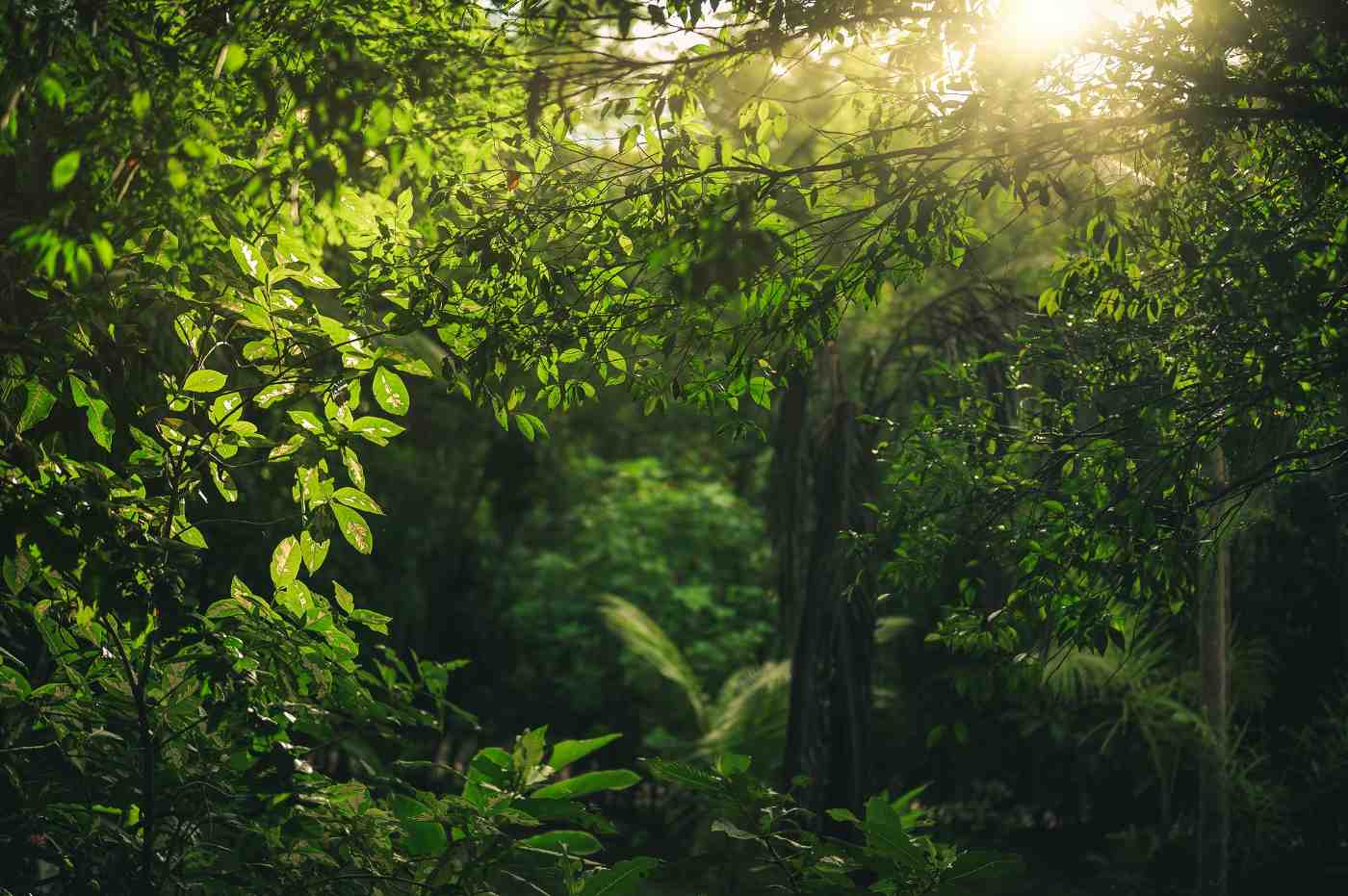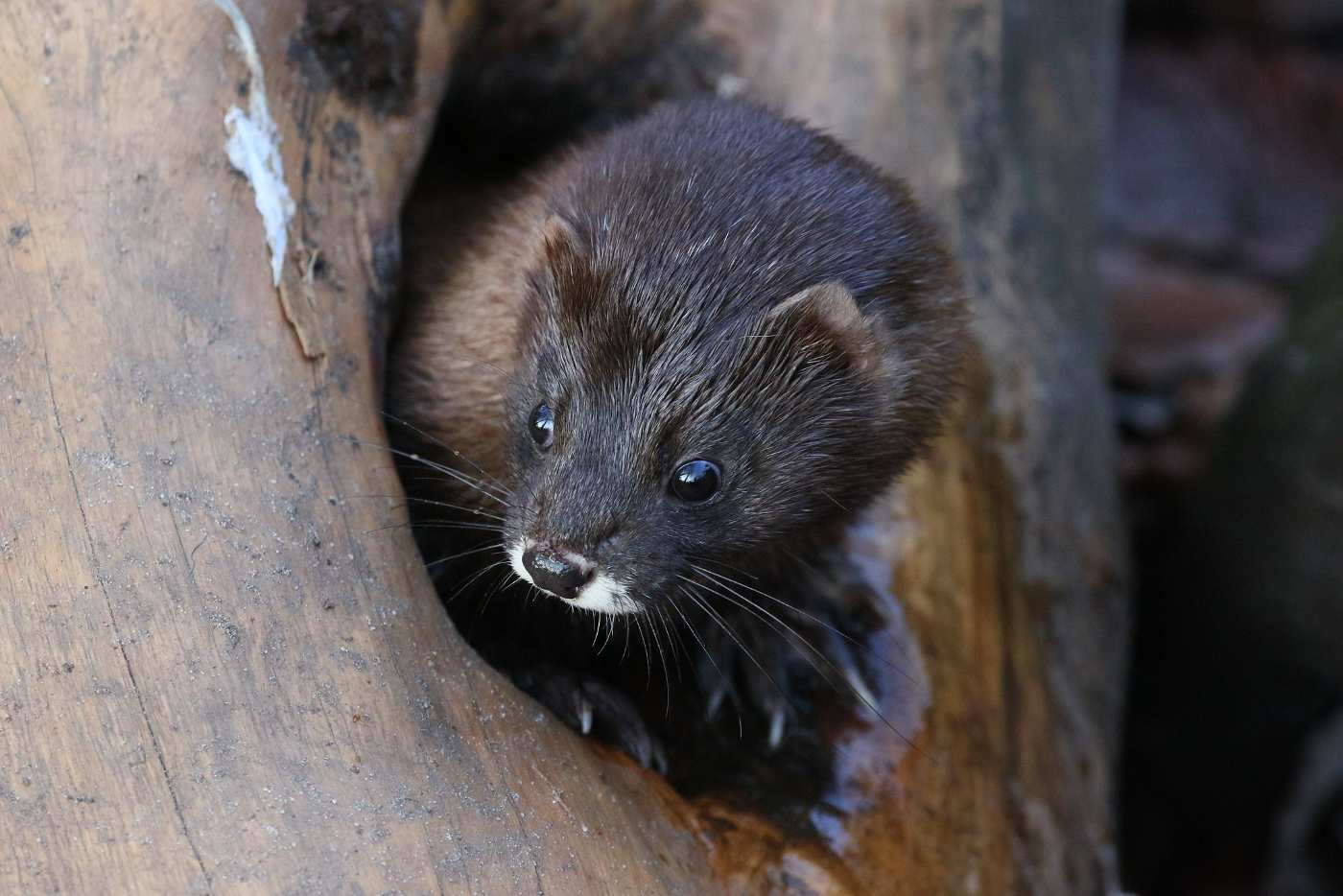We’re all familiar with the idea of a tropical rainforest, such as the Amazon. Those rainforests are called “tropical” because they grow in the tropics, i.e., between the Tropic of Cancer and the Tropic of Capricorn, near the Equator. But there are actually rainforests all over the world.
A rainforest is simply a forest that experiences high levels of humidity and precipitation. The word “temperate” refers to the latitude these forests are found in. Temperate rainforests, then, grow in cooler climates north or south of the tropics, usually along a coast.
The largest temperate rain forest is on the west coast of North America, and its total area runs from northern California up to Alaska. Another runs through the southern cone of South America, through Argentina and southern Chile.
Smaller pockets of rainforests also grow in Europe, Japan, Korea, the U.K., Australia, New Zealand, South Africa and the southeastern U.S.
Temperate rainforests are characterized by mild winters, steady year-round temperatures and plenty of rain (140 to 167 inches (12 to 14 feet) per year in Olympic National Park in Washington state, for example).
These are old growth forests, with ancient, giant trees, rich, complex ecosystems and many rare species.
What Kinds of Plants and Animals Live in Temperate Rainforests?
“Some of the world’s tallest trees grow in temperate rainforests,” explains conservation biologist Dominick A. DellaSala. Between the North American sequoia on the Pacific coast and the Australian mountain ash, a coastal temperate rainforest can be home to some of the biggest living beings on earth.
But rainforests also support the smallest of small things. These giant trees support an incredible diversity of lichen, mosses and small plants that create the forest ecosystem that in turn supports them.
Many vulnerable animal species make their homes in the rare habitat of temperate forests, too, from the giant panda of southern China to the red wolves of North Carolina to the big cats and grizzly bears of the mountain ranges of the Pacific northwest.
The animals we usually associate with forests are top predators like mountain lions, black bears, wild boars, the bald eagle and the gray wolf (none of which are currently endangered).
It’s easy to overlook small mammals, as well as migratory birds, amphibians, insects and the many species of trees that have become endangered through human activity. So let’s explore some lesser-known threatened species who don’t always capture public attention.
10 Endangered Species in Temperate Rainforests
We’ll be using the International Union for Conservation of Nature (IUCN)’s “Red List” for information on a species’ status. They place species on this spectrum:
• Least Concern
• Near Threatened
• Vulnerable
• Endangered
• Critically Endangered
• Extinct in the Wild
• Extinct
1. European Mink
The IUCN lists the European mink as critically endangered, with populations decreasing. Once common across Europe, they’re now extinct in most countries. Small populations are hanging on in France, Spain, the Ukraine, Romania and Russia. They’ve been reintroduced in Estonia.
These adorable minks are dark and glossy, with white on their upper and lower lips and sometimes on their chests and bellies. They live under tree roots on the forested banks of freshwater bodies. Researchers estimate there are fewer than 30,000 left.
The biggest threat these minks face has been habitat destruction. Road construction, logging, agriculture and urbanization have all resulted in habitat loss over the centuries. Hunting has also decimated their populations, with humans killing them en masse for their fur.
The IUCN explains that the introduction of the American mink on fur farms in the 1920s led to escapees who adapted readily and became the dominant species, further depleting native populations.
2. Vanzolini’s Spiny-Chest Frog
Vanzolini’s spiny-chest frog is listed as endangered on the IUCN’s Red List. Their populations are decreasing. Rarely seen, this little frog is found only in small areas of the Valdivian temperate forests in central Chile.
Amphibian Web describes them as small to medium sized, with a yellow triangular marking on the head. Little is known about their biology or behaviour, but it’s thought they hang out in leaf litter on the forest floor and reproduce in pools within streams.
The main threats to their existence come from habitat loss. Urbanization and residential development, as well as logging, have fragmented the frog’s habitat and Amphibian Web notes that their tiny range has been “almost completely destroyed in the last 10 years.” Their populations don’t handle disruption well, which makes conservation action urgent.
3. Mountain Caribou
Listed as vulnerable by the IUCN, the mountain caribou of southeastern British Columbia and the northwestern United States are especially at risk. The B.C. government states that about “98 percent of the world’s 2500 Mountain Caribou live in British Columbia,” where they struggle with loss of habitat, forest fires and unsustainable forestry practices.
The mountain caribou is uniquely adapted to living in mountainous old-growth forest. In the winter months they live at higher elevations, eating the lichen that grows on trees since there’s too much snow to dig through to reach the ground. Forest fires and logging have deeply reduced the number of old trees available for lichen to grow on and thus, the amount of food available for the mountain caribou.
While the caribou are listed as vulnerable on the province’s Blue List, decline has been ongoing and there’s been a push from conservationists for a Great Caribou Rainforest Conservation Area to be established to better protect their habitat.
4. Dwarf Mountain Pine
Unlike the western hemlock and the mountain ash, the dwarf mountain pine isn’t immediately impressive. It reaches about 1 m tall and looks a bit scraggly. The thing that makes it impressive is its age. Pherosphaera fitzgeraldii is a relict species, persisting into the modern world from the age of the dinosaurs.
Now, it’s found only in the Greater Blue Mountains World Heritage Area in New South Wales, where, according to the IUCN, there are 455 trees left.
Whitish on the top of its leaves and green below, this pine prefers cliffs and steep terrain. The NSW Office of Environment & Heritage remarks that while the trees “appear to be long-lived and have low mortality rates,” there are very few young trees in existence.
This critically endangered pine faces threats from pollution, as well as bushfires and other effects of climate change.
5. Steppe Eagle
The steppe eagle is not, strictly speaking, a forest bird, migrating across huge swaths of the globe from breeding grounds in Eastern Europe and Western Asia to winter habitats in Africa and southern Asia.
The Hyrcanian Forests of northern Iran and south-eastern Azerbaijan are an important ecosystem for them, however, providing forest cover and a range of feeding opportunities to support the eagles on their travels.
They’re large birds with a wingspan up to 7 feet and a beautiful grey barring on their wings and tail. They’re also pretty metal—they sometimes make their nests from bones instead of sticks.
The steppe eagle is just one of many species of birds that face increased threats from changes in land use, whether from deforestation, pesticide use on new agricultural lands, infrastructure like power lines and increased contact with human populations.
6. Alishan Salamander
The rare Alishan salamander is named for the Alishan mountain range in Yushan Park, Taiwan. Max Sparreboom’s Salamanders of the Old World describes the salamander as small (only 10-12 cm long), smooth and dark brown, with some yellow-brown spots and a lighter belly.
This salamander prefers mid-high altitudes and lots of humidity. They live in cold water environments like springs and streams. With their small populations and highly specialized climate preferences, this tiny creature is vulnerable to any destabilizations of their habitats.
The IUCN lists them as endangered. Habitat loss is the main threat to their species level, although researchers are also concerned that global warming will have an impact on how well they thrive at lower altitudes, too.
7. Long-Tailed Forest Shrew
The Knysna-Amatole Montane Forests of South Africa might best be known for their declining (and possibly now extinct) population of African bush elephants. But many more species make these forests their home, including the endangered long-tailed forest shrew.
This shrew isn’t remarkable to look at, but their parenting practices are. Babies learn to follow their mothers by “caravanning,” where each baby takes the tail of one of their siblings in their mouth to form a chain that trails behind their mother when she forages.
Habitat loss is the biggest threat to these shrews. Between urbanization, agriculture and industrial encroachment on the forests they call home, the long-tailed forest shrew’s numbers are declining and their populations are becoming more fragmented.
The IUCN also states that the shrews have a high metabolism and don’t tolerate extreme temperatures well, which will make them more vulnerable to climatic change.
8. New Zealand Long-Tailed Bat
New Zealand is home to temperate forests with an astonishing array of endemic species. Its forests provide critical habitats for the animal populations that dwell in them, including the New Zealand long-tailed bat, or pekapeka-tou-roa (in Māori).
These are teeny bats who weigh 8-11 grams and easily fit into a human hand. Their colonies can have a range of over 100 square kilometres, according to New Zealand’s Department of Conservation, making them incredible flyers.
Their tiny size, however, has made them easy prey for invasive species like rats, cats and opossums. Loss of habitat has also taken a toll, and they’re listed as critically endangered on the IUCN’s Red List.
9. Patagonian Cypress
This species, also called the alerce tree, was declared a national monument of Chile in 1976. The Global Trees Campaign reports that it’s one of the largest trees in the southern hemisphere, reaching up to 5 metres in diameter and 70 metres high. These trees are also incredibly long-lived—the oldest Patagonian cypress coming is 3, 622 years old.
These trees have been over-harvested since the colonial age began, with Spanish colonists felling the trees for ship masts and lumber. Logging has been illegal since the tree was named a national monument, although the IUCN suggests that illegal logging persisted in Chile through the 1980s.
The trees are threatened today by land clearances for cattle ranching and related activities, as well as forest fires. It’s listed as endangered.
10. Alexander Archipelago Wolf
This subspecies of grey wolf lives in the Tongass National Forest in southeast Alaska. Darker than many of their closest relatives, the Alexander Archipelago wolf weighs only 30-50 pounds. Despite their small size, they play a crucial role in their habitat.
Hunting is a huge threat to the Alexander Archipelago wolf, as are accidental deaths from vehicle collisions and a loss of food as forest habitat is destroyed. Clearcut logging is a persistent threat.
The wolf doesn’t currently enjoy any protection as an endangered species, despite population numbers only in the low hundreds. Recent conservation efforts have focused on getting the wolf protected under the Endangered Species Act, and a petition to that effect is currently under review by the U.S. Fish and Wildlife Service.
Conclusion
These are just some examples of endangered species of the temperate forest ecosystems that are scattered across our planet. If you’d like to do more to protect them and stop biodiversity loss, support your national parks, lobby your federal government and reach out to conservation organizations and ask how you can help.
Feature image: Conscious Design; Image 1: zoofanatic; Image 2: Tony Hisgett



